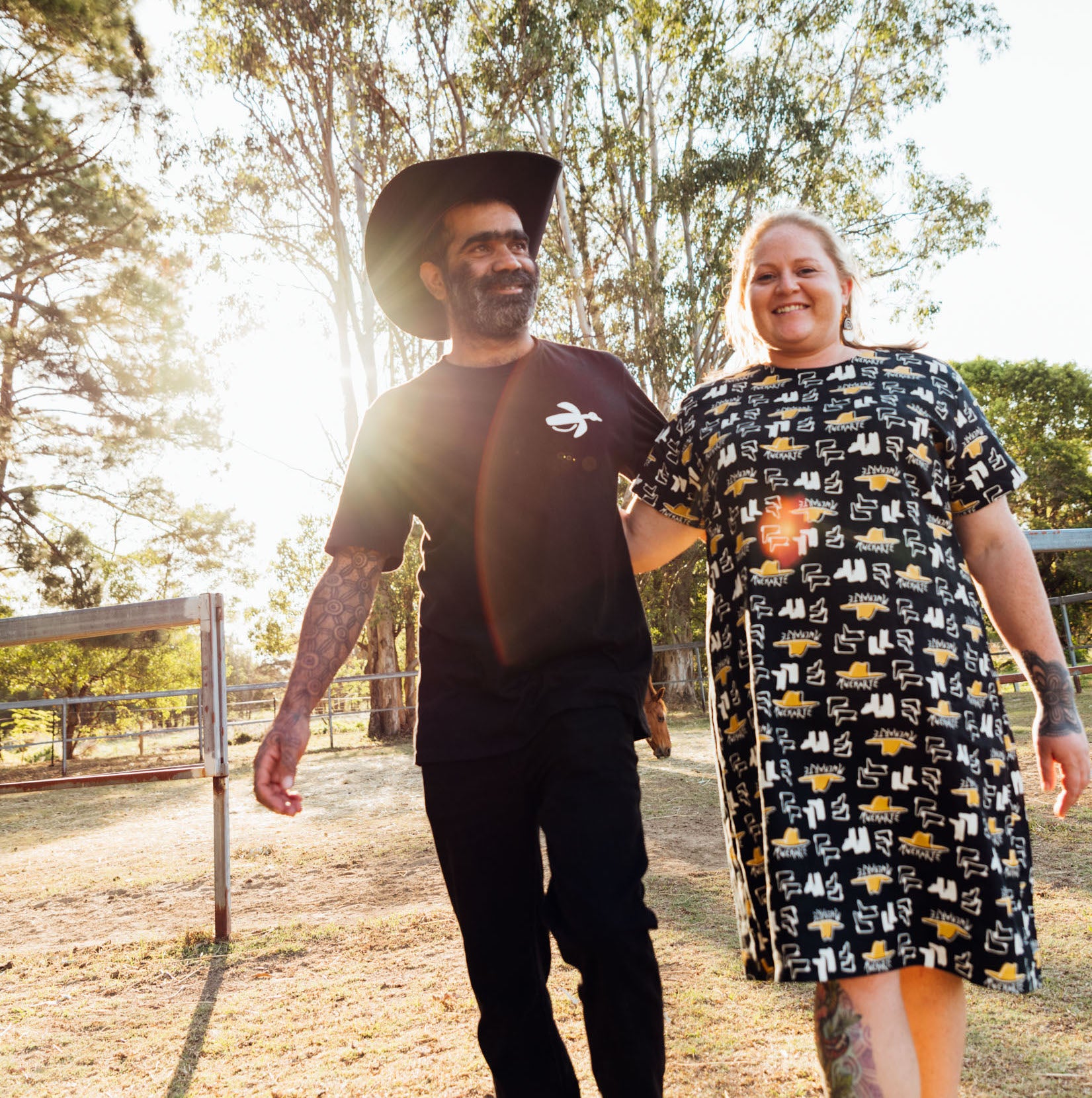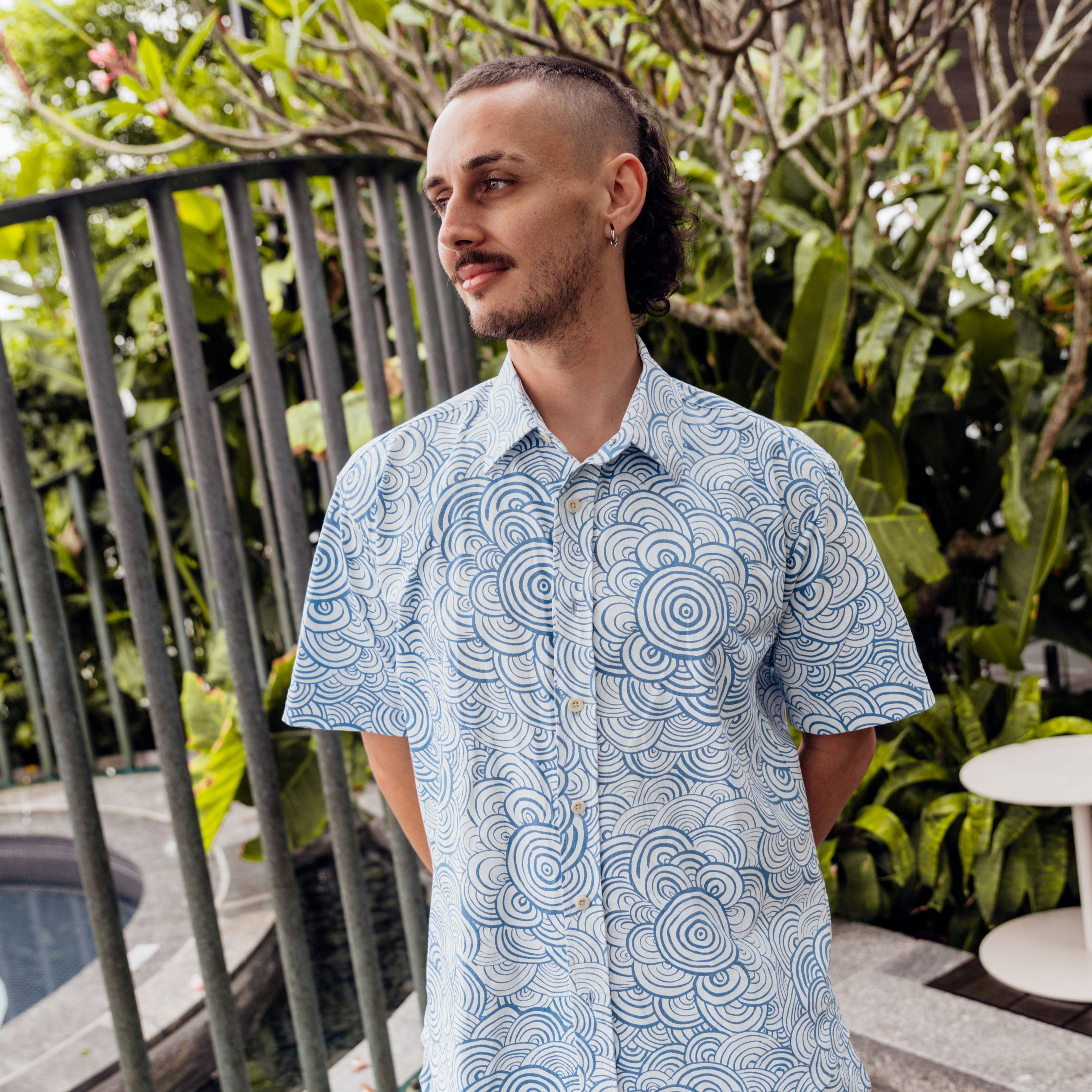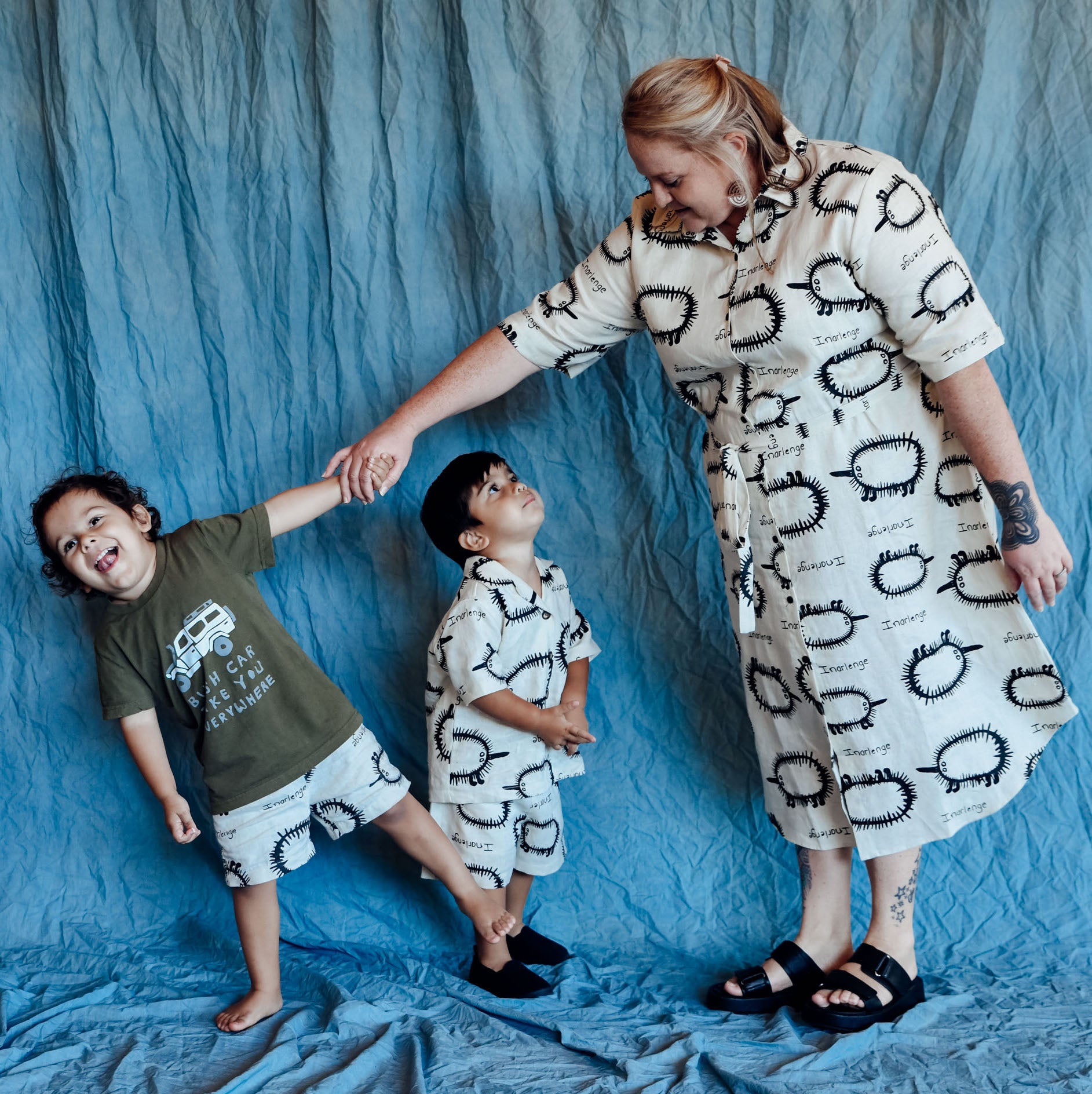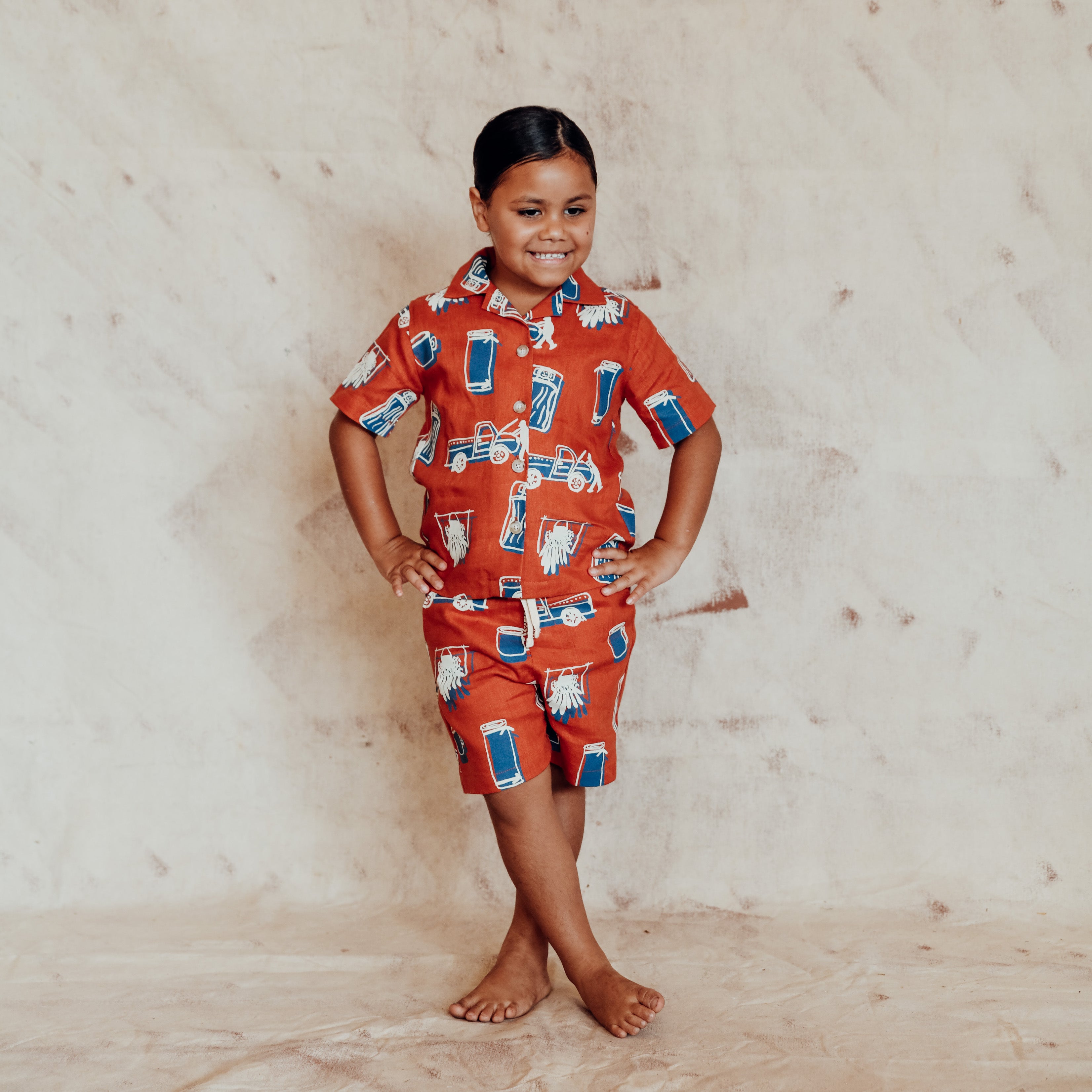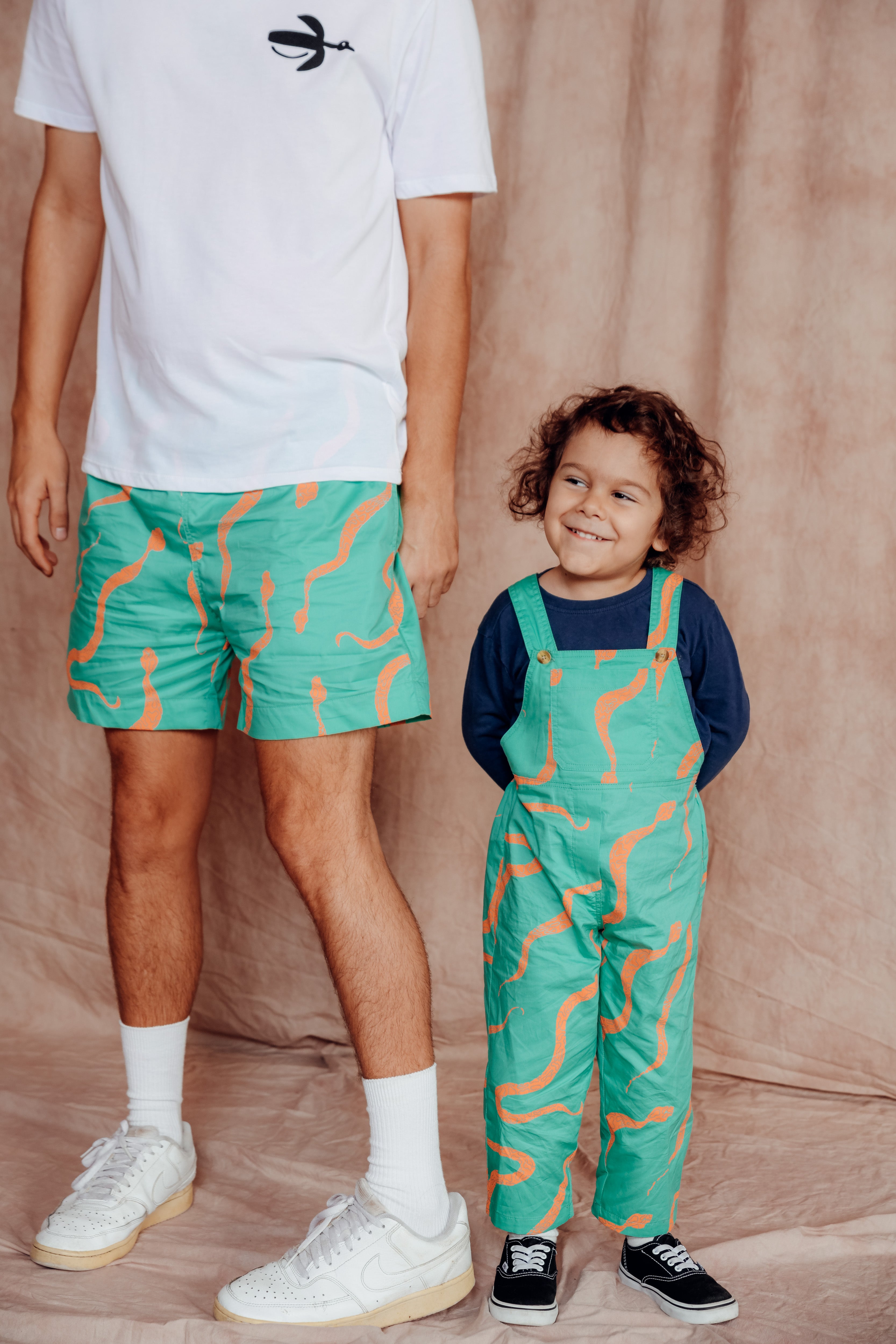There are many reasons to choose natural fibres for your clothing. The fabric made from natural fibers is typically more breathable so your body is better able to regulate its temperature, making it more comfortable (and less sweaty!) to wear. Natural fibres are also grown from renewable resources and biodegradable, so can be less impactful on the environment. Also, garments made from natural materials usually sit more beautifully on the body and feel amazing to wear! And, with care, they can last longer.
 The Miinimbi (Whale) print by artist Jacqui Hunter on the Button Down Shift Dress on 100% linen. Photo by Michael Jalaru Torres.
The Miinimbi (Whale) print by artist Jacqui Hunter on the Button Down Shift Dress on 100% linen. Photo by Michael Jalaru Torres.
Each Magpie Goose garment is made from 100% natural fibres. Our fabrics are hand screen printed with water-based inks, and then crafted into high-quality garments. We have a few tips for keeping your pieces in great shape. After all, the longer a garment lasts, the lower your wardrobe’s environmental footprint – which is another way of caring for Country.
Here is a list of fabrics you’ll find at Magpie Goose:
- Mid and heavier weight linens
- Polished cotton poplin
- Cotton drill
- Organic cotton jersey
- Tencel linen blend
For any garment, always start by checking the label for care instructions.
How to care for linen
Linen is a strong, durable and breathable fibre, as well as smooth on the skin. Linens last longer if they’re hand washed. To hand wash, fill a clean sink with cool water and mild detergent. Gently massage your clothes then drain the soapy water, and rinse with cool water until it runs soap-free. If you machine wash, use a short or delicate cycle with cold or lukewarm water, and ensure you wash with like-colours to avoid colours running.
 This Aarli (Salmon) print by Russel Davey is printed on 100% linen. Photo by Georgia Wallace.
This Aarli (Salmon) print by Russel Davey is printed on 100% linen. Photo by Georgia Wallace.
Avoid wringing out your linens to dry because they can wrinkle easily. Instead, use a towel to absorb excess water and hang to drip dry in the shade. Avoid the tumble dryer (though most linens are safe to dry clean, especially best for more structured pieces like suit jackets).
Be mindful of how you fold or hang your linen garments and use hangers as much as possible to avoid creasing in your clothes! Before wearing you can use a warm iron on the reverse side will ensure any prints are preserved. Better yet, get yourself a hand held garment steamer – you won’t regret it! Steaming your clothes not only gets out wrinkles but it also kills odor-causing bacteria.
How to care for Cotton
Cotton is a highly absorbent, flexible and soft fibre. Follow the same handwashing process as with linen above, using cool temperatures and a gentle cycle if washing by machine. When drying cotton, stretching is a risk, so laying flat to dry can help maintain the size and shape of your garment.
 Our Big Tee shirts are screen printed cotton jersey. Photo by Georgia Wallace.
Our Big Tee shirts are screen printed cotton jersey. Photo by Georgia Wallace.
Cotton has less ‘memory’ than linen, so its creases are easier to steam or iron out. With woven cottons, like poplins and drills, it’s best to hang garments, but jerseys (the stretch fabric used for t-shirts and sweatpants) can be rolled and stored in drawers.
How to care for Tencel
Tencel fabric, made from sustainably sourced wood pulp, is soft and durable, requiring gentle care to maintain its quality. Like linen and cotton, high temperatures are damaging to Tencel, so cold, gentle hand washing is best.
If using a machine, wash Tencel garments in cold water using a delicate cycle with mild detergent, avoiding bleach or fabric softeners that can weaken fibres. Air dry to prevent shrinkage, as high heat can damage the material. Always check the care label for specific instructions, and avoid overloading the washing machine to minimise friction. With proper care, Tencel retains its silky texture and vibrant colour for years.

Ensure your item is completely dry before storing to prevent any dampness and mildew. Hang your Tencel items on hangers to maintain their slinky drape.
How to care for screen-printed fabrics
Treat your wearable art with love and care! Magpie Goose fabrics are especially designed through collaborative processes with Aboriginal artists around Australia, then printed with water-based inks and then heat-set. While designs are colourfast, they will fade over time. As well as taking care with washing and storing your natural fibre clothing, we recommend steaming or reverse ironing your uniquely printed garments. Avoiding direct heat and pressure will keep the designs richer in colour for longer.
 The Joomoo Tree print by artist Rowena Mouda being screen printed locally in Australia.
The Joomoo Tree print by artist Rowena Mouda being screen printed locally in Australia.
Joomoo Tree print photographed on Country in Ardyaloon. Photo by Michael Jalaru Torres.





